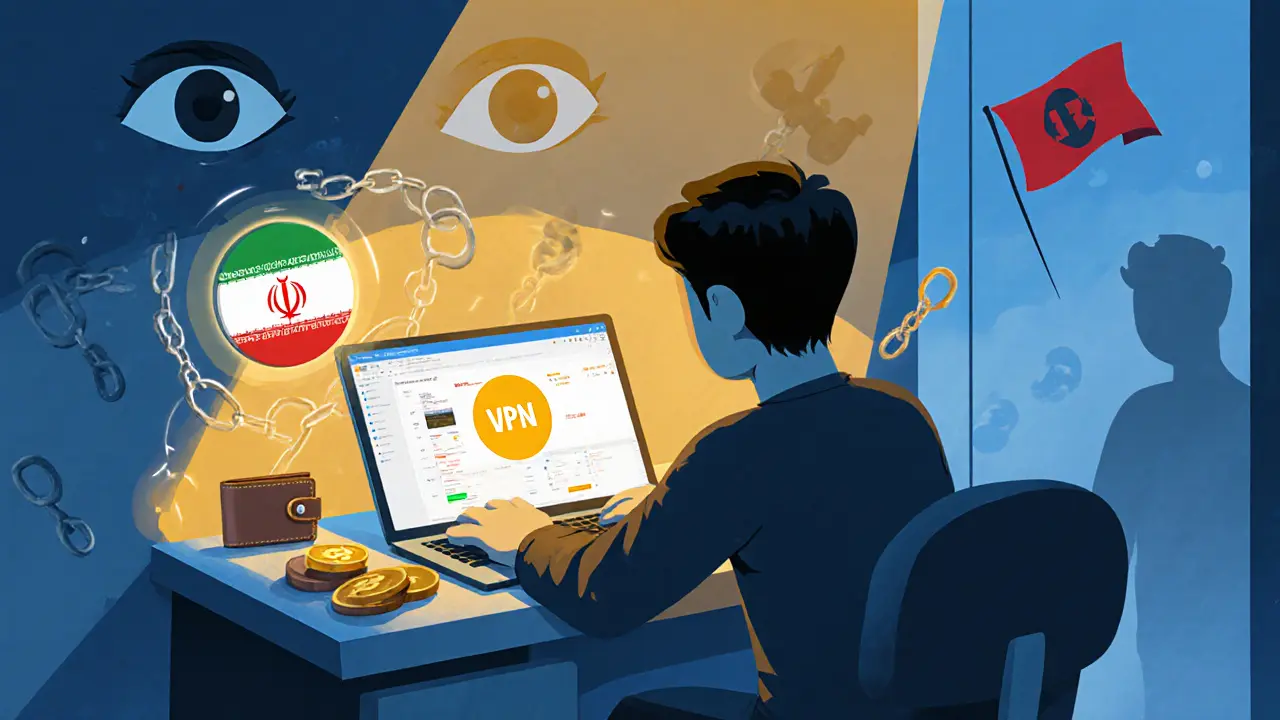Crypto Iran: What You Need to Know About Cryptocurrency Use in Iran
When people in Crypto Iran, the use of digital currencies by individuals and businesses in Iran amid economic pressure and international sanctions. Also known as Iranian cryptocurrency adoption, it has become a lifeline for many facing inflation, banking restrictions, and currency collapse. Iran’s official currency, the rial, has lost over 90% of its value since 2018. With banks blocked from global systems and access to foreign dollars nearly impossible, crypto isn’t a luxury—it’s survival. People turn to Bitcoin, USDT, and Monero to protect savings, pay for imports, and send money abroad. This isn’t theory. It’s daily life for millions.
What makes crypto work in Iran isn’t just tech—it’s necessity. Cryptocurrency sanctions, U.S. and EU restrictions that limit financial access but don’t fully block peer-to-peer crypto flows have created a gray zone. While banks are frozen, crypto exchanges and local traders operate quietly. Many use P2P platforms like LocalBitcoins or Paxful, where buyers and sellers trade directly. Others rely on privacy coins like Monero, a cryptocurrency designed to hide transaction details, making it ideal for users under surveillance because every transfer is untraceable. Unlike Bitcoin, where every transaction is public, Monero lets Iranians move value without drawing attention from regulators or hackers.
But it’s not all safe or simple. Iranian crypto regulations, a mix of unofficial tolerance and occasional crackdowns, where the government both restricts and tries to control digital currency use change without warning. In 2021, Iran banned private mining but launched its own state-run mining farms to profit from electricity subsidies. Now, the government monitors crypto wallets and has arrested people for trading without licenses. Even using a VPN to access foreign exchanges can get you in trouble. The rules aren’t written down—they’re enforced arbitrarily. That’s why most Iranians avoid big platforms like Binance or Coinbase. They stick to local networks, Telegram groups, and trusted contacts.
What’s missing from most global reports? Real stories. People trading USDT for cash in Tehran markets. Farmers using crypto to buy seeds from Turkey. Students paying for online courses with Bitcoin because their cards don’t work. These aren’t outliers—they’re the norm. And behind every transaction is a choice: risk jail, or risk poverty.
Below, you’ll find reviews and warnings about exchanges that claim to serve Iranian users, deep dives into privacy tools that actually work, and breakdowns of how sanctions shape what’s possible. Some posts warn about scams pretending to be Iranian-friendly platforms. Others explain how to use blockchain to bypass banking blocks without getting caught. This isn’t about speculation. It’s about understanding what’s real, what’s dangerous, and what you can actually rely on when your country’s economy is falling apart.
DEX Access for Iranian Citizens: How to Use Decentralized Exchanges Amid Restrictions
Iranian citizens are turning to decentralized exchanges to bypass government restrictions and sanctions. Learn how DEXs like QuickSwap on Polygon, combined with DAI and VPNs, are becoming the only reliable way to trade crypto safely in Iran.
